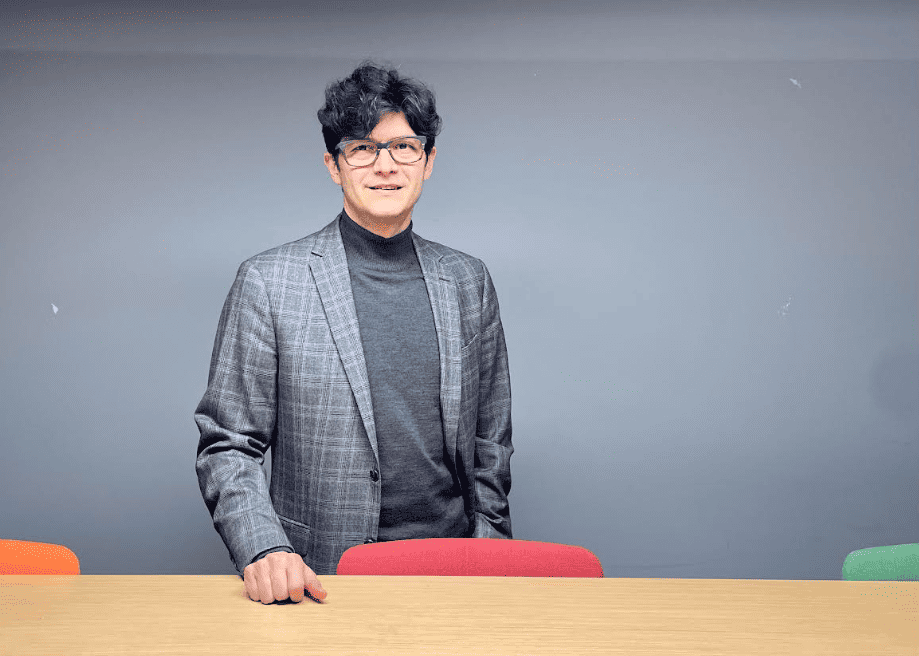
Not all that starts in Eindhoven, stays in Eindhoven. In Lombok, a multicultural neighborhood in the city of Utrecht, two former Design Academy students have started a new project. De Voorkamer (The Living Room) is a place where people from refugee centers meet up with Dutch civilians. Founder Pim van der Mijl: “I saw people protesting the coming of refugees to their cities and thought: This is something I can work with.”
Van der Mijl was in Spain for an internship when he watched the Dutch heavily protesting the government plans to place refugees across the country. First in the small town of Oranje, later also in cities like Tilburg and Eindhoven. It made him brush off an old idea, together with fellow-student Shay Raviv he started to work out what has now turned into De Voorkamer.

An open city
That idea became The Voorkamer, a project which just as well could have started in Eindhoven as on the place where it is today: Lombok, Utrecht. Both cities have refugee shelters and both cities have a strong creative culture and community. “We eventually chose for Utrecht because a lot of people were willing to work with us here and we could get easy access to the refugees”, Van der Mijl says. “We were ready for a new place, a new adventure, and Utrecht seemed to offer itself through all of the connections we had built in the past years.”
Van der Mijl is sitting in an empty Voorkamer, drinking Arabian coffee on a stool that has been made by refugees. Every once in a while somebody comes in. At first one of the volunteering refugees comes in to check up on a project. Then someone who would like to teach creative lessons to the refugees comes in. People who might have similar backgrounds but have been living in different worlds.
“Because that is what the Voorkamer should do”, Van der Mijl says. “We bring people from different backgrounds together trough projects and hope that the two of them will meet and get to know each other.” A first project that will have to help take the Voorkamer in the right direction is the making of an Arabian cafeteria.
To create that, the stool Van der Mijl is sitting on, lamps, cups and a backgammon board have been made by refugees. They have also written several stories to be told on the night of the cafeteria. Other projects like this should be organized in the future. The Voorkamer will usually be the place where the evenings will be hosted.
COA
By now, the Voorkamer has been open for about a week. Several months before the official opening, the COA, which is responsible for all communication with refugees in the country, was contacted. This wasn’t always easy. “They were willing to help, but there are a lot of requests for projects and they can’t facilitate all of them at the same time.”
It wasn’t always easy.
Once the COA accepted the Voorkamers request, it was relatively easy to get people to be enthusiastic about joining the project. “Once you actually sit down with the refugees you’ll notice there’s a great need to go outside and discover the people and culture in this country. Refugees that live inside the center become isolated from the rest of Dutch society.”
Poverty
The idea for the Voorkamer first started to unravel when Van der Mijl was in his third year at the Design Academy. There, the student was instructed to think about poverty across the globe. “Why would I look to Africa for this, I hardly know anything about the continent or its culture. I started looking closer to home and ended up in the refugee centers in The Netherlands. I found such a spectrum of cultures there. Soon after, I started working on ways to connect these cultures and let them work together.”
For the first year, the Voorkamer will get its funding out of funds supported by the government. After that, Van der Mijl will have to look for a business model to be able to continue the Voorkamer. “We’ll try to sell the projects that are made here but I’m not sure if that will bring in enough to keep the shop open. We’ll also have to earn money by organizing different events.”
Just how long the Voorkamer will exist is not yet set in stone. For one year at least. The concept might be popping up in other cities in the future however. The Voorkamer is being developed as a system that can be re-applied wherever you’d like. “We are working on different tools and a manual to achieve this. For now, our attention is focused on Utrecht, but by collaborating with others we might be able to set up similar projects in other places in the future.” Perhaps one day, Eindhoven will have its own Voorkamer as well.



